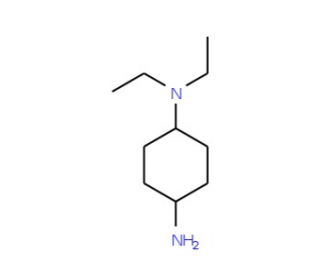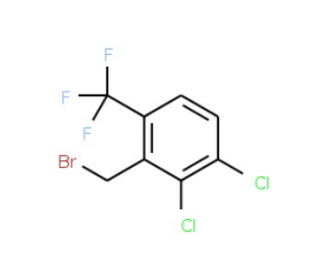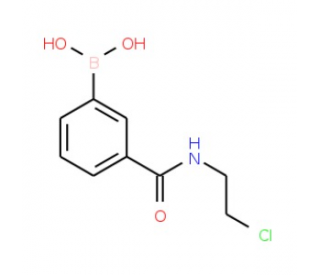详细说明
Species Reactivity
Human
Specificity
Detects human TIM‑1/KIM-1/HAVCR in direct ELISAs and Western blots. Does not cross-react with recombinant mouse (rm) TIM-1, rmTIM-2, or rhTIM-3.
Source
Monoclonal Mouse IgG 2B Clone # 219211
Purification
Protein A or G purified from hybridoma culture supernatant
Immunogen
Mouse myeloma cell line NS0-derived recombinant human TIM‑1/KIM-1/HAVCR
Ser21-Thr288
Accession # AAC39862Formulation
Supplied in a saline solution containing BSA and Sodium Azide.
Label
Alexa Fluor 488
Applications
Recommended
ConcentrationSample
Flow Cytometry
5 µL/10 6 cells
See below
Please Note: Optimal dilutions should be determined by each laboratory for each application. are available in the Technical Information section on our website.
Data Examples
Flow Cytometry | Detection of TIM‑1/KIM‑1/HAVCR in Th2-stimulated Human PBMCs by Flow Cytometry. (A) Unstimulated and (B) Th2-stimulated human peripheral blood mononuclear cells (PBMCs) were stained with Mouse Anti-Human TIM-1/KIM-1/HAVCR Alexa Fluor® 488-conjugated Monoclonal Antibody (Catalog # FAB1750G) and Mouse Anti-Human CD4 APC-conjugated Monoclonal Antibody (Catalog # ). Quadrant markers were set based on control antibody staining (Catalog # ). View our protocol for . |
Preparation and Storage
Shipping
The product is shipped with polar packs. Upon receipt, store it immediately at the temperature recommended below.
Stability & Storage
Protect from light. Do not freeze.
12 months from date of receipt, 2 to 8 °C as supplied.
Background: TIM-1/KIM-1/HAVCR
TIM-1 (T cell-immunoglobulin-mucin; also KIM-1 and HAVcr-1) is a 100 kDa, type I transmembrane glycoprotein member of the TIM family of immunoglobulin superfamily molecules (1-3). This gene family is involved in the regulation of Th1 and Th2-cell-mediated immunity. Human TIM-1 is synthesized as a 359 amino acid (aa) precursor that contains a 20 aa signal sequence, a 270 aa extracellular domain (ECD), a 21 aa transmembrane segment and a 48 aa cytoplasmic domain (4-6). The ECD contains oneV-type Ig-like domain and a mucin region characterized by multiple PTTTTL motifs. The mucin region undergoes extensive O-linked glycosylation. The TIM-1 gene is highly polymorphic and undergoes alternate splicing (1). For instance, the presence of a six aa sequence (MTTTVP) at position #137 of the mature molecule is associated with protection from atopy in people with a history of hepatitis A (7, 8). There are two cytoplasmic alternate splice forms of TIM‑1. One is a long (359 aa) kidney form termed TIM-1b, and one is a short (334 aa) liver form termed TIM-1a. Both are identical through the first 323 aa of their precursors. TIM-1b contains a tyrosine phosphorylation motif that is not present in 1a (6). TIM-1 is also known to circulate as a soluble form. Constitutive cleavage by an undefined MMP (possibly ADAM33) releases an 85 - 90 kDa soluble molecule (6). The ECD of human TIM-1 is 50% and 43% aa identical to mouse and canine TIM-1 ECD, respectively. The only two reported ligands for TIM-1 are TIM-4 and the hepatitis A virus (4, 9). However, others are believed to exist, and based on the ligand for TIM-3, one may well be an S-type lectin (10). TIM-1 ligation induces T cell proliferation and promotes cytokine production (1, 10).
References:
Meyers, J.H. et al. (2005) Trends Mol. Med. 11:1471.
Kuchroo, V.K. et al. (2003) Nat. Rev. Immunol. 3:454.
Mariat, C. et al. (2005) Phil. Trans. R. Soc. B 360:1681.
Feigelstock, D. et al. (1998) J. Virol. 72:6621.
Ichimura, T. et al. (1998) J. Biol. Chem. 273:4135.
Bailly, V. et al. (2002) J. Biol. Chem. 277:39739.
Umetsu, D.T. et al. (2005) J. Pediatr. Gastroenterol. Nutr. 40:S43.
Gao, P-S. et al. (2005) J. Allergy Clin. Immunol. 115:982.
Zhu, C. et al. (2005) Nat. Immunol. 6:1245.
Meyers, J.H. et al. (2005) Nat. Immunol. 6:455.
Long Name:
T Cell Immunoglobulin Mucin-1
Entrez Gene IDs:
26762 (Human); 171283 (Mouse); 286934 (Rat); 102141332 (Cynomolgus Monkey)
Alternate Names:
CD365; HAVCR1; HAVCR-1; HAVCRT cell immunoglobin domain and mucin domain protein 1; hepatitis A virus cellular receptor 1; Kidney injury molecule 1; KIM1; KIM-1; T-cell immunoglobulin and mucin domain-containing protein 1; TIM1; TIM-1; TIM-1TIM; TIM1TIMD-1; TIMD1T-cell membrane protein 1










 粤公网安备44196802000105号
粤公网安备44196802000105号